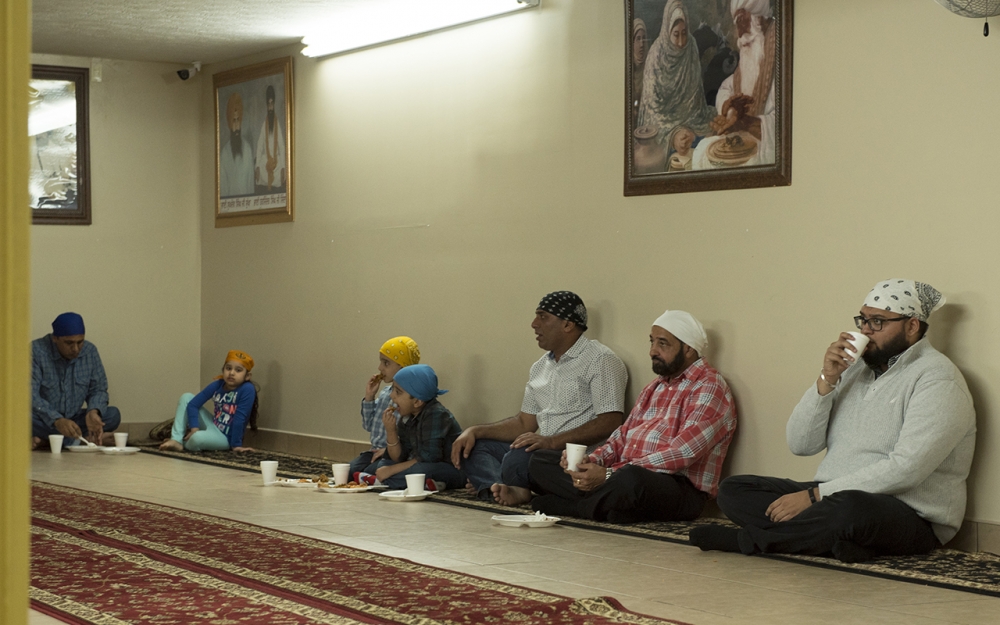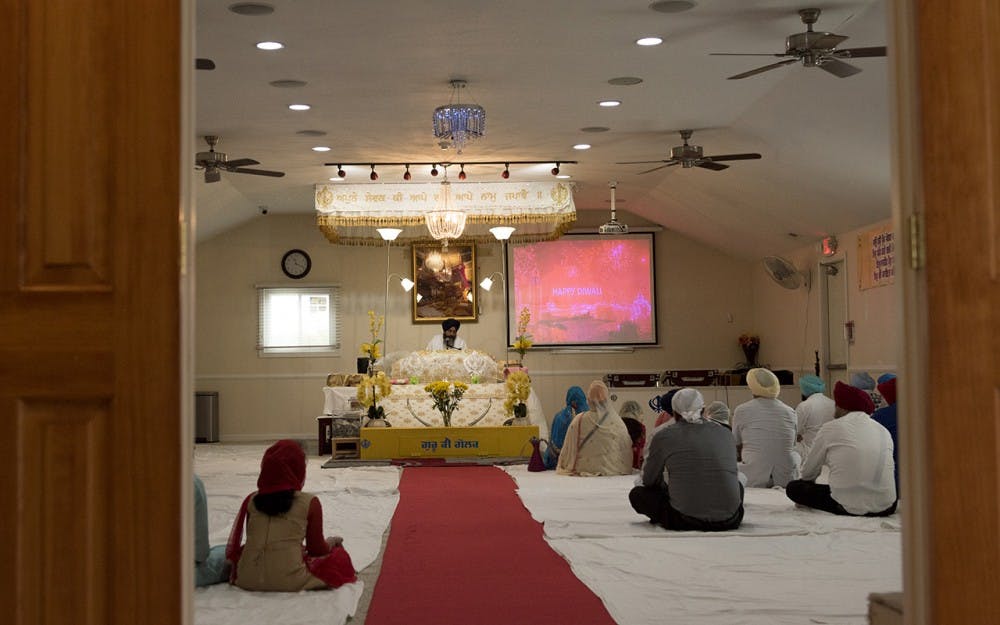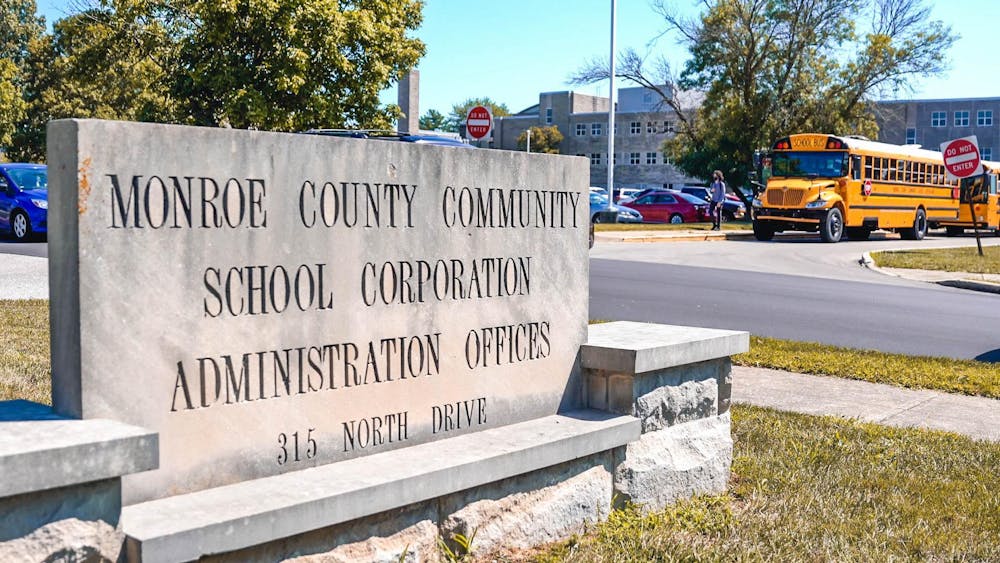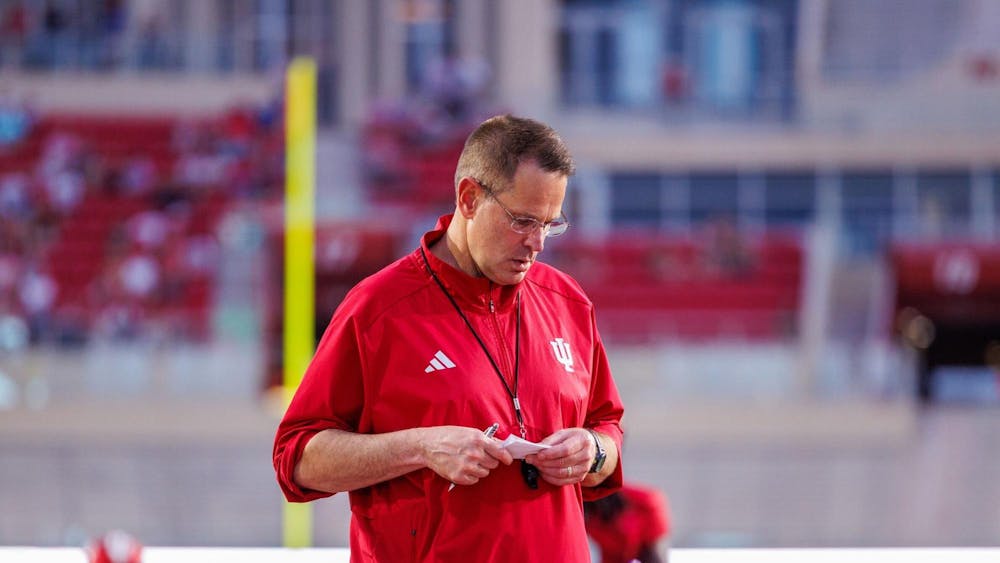Gurinder Singh Khalsa was not surprised.
His dark skin, long beard and turbaned head have often been mistaken as symbols of Arabic culture, which is what Ohio members of the Donald Trump campaign assumed when they put a picture of him on a flyer advertising Muslims who support Trump in October.
But he is not from the Middle East, nor is he Muslim. He is Indian and practices Sikhism, a monotheistic Indian religion.
So when the husband of Khalsa’s friend April Alexander stumbled on Khalsa’s image while reading the Huffington Post, he was alarmed. He showed Alexander, who immediately called Khalsa.
“Do you support Trump?” Alexander asked when she reached him.
“What happened?” Khalsa asked.
Alexander told him about the flyer, about the picture of him that had the word “Muslims” above it and about how it was stuffed in mailboxes in Ohio to advertise the diversity of Trump’s supporters.
The mischaracterization stung, as it always did, but it did not shock him. It was simply another misunderstanding in a long line of offenses — intentional or otherwise — that are at best a result of ignorance and at worst culminate in acts of violence.
***
Half a million Sikhs live in the United States. Nearly 10,000 live in Indiana, concentrated mostly in the Fishers, Greenwood, Indianapolis and northwest Indiana regions.
They are targets of hate crimes often misdirected at them because of their appearance.
Sikh men wear turbans at all times. Many Sikh people do not cut their hair as part of the religion’s requirements, so some men have beards that extend to their chests or beyond. Because many people are unfamiliar with Sikhism this appearance leads some to associate Sikhs with Islam or the Middle East.
In the first month after Sept. 11, 2001, a Sikh organization called the Sikh Coalition documented more than 300 cases of violence or discrimination against Sikh individuals.
On Sept. 15, 2001, a Sikh gas station owner was murdered in California by a white man who said he wanted to kill “the ragheads” responsible for the Sept. 11 terrorist attacks, according to the Southern Poverty Law Center.
Khalsa was living in California at that time. He’d moved to the United States from India five years earlier in 1996. He said he moved to escape persecution in India, where Sikhs are still a minority.
“I feel more respect here than in India,” Khalsa said.
Khalsa lived in India during the 1984 anti-Sikh riots. The Indian Army had attacked the Golden Temple — the holiest holy building, or gurdwara, in Sikhism — and in response, India’s then-prime minister, Indira Gandhi, was assassinated by her two Sikh bodyguards. Gandhi had ordered the politically motivated military operation that led to the attack on the temple and on Sikhs in Punjab, India.
Khalsa remembers being in sixth grade when the Indian Army attacked the Golden Temple. He cannot speak of watching his Sikh father’s spirit break as they processed how many Sikhs were dying without being moved to tears.
“That day was the turning point,” Khalsa said. “It was one of the worst moments for Sikhs. Since then I realized minorities are not safe in India.”
The concept of the U.S. and the potential to be treated fairly as an individual intrigued him.
“Everyone is equal here under law,” he said. “I wanted that.”
Twelve years later, he made it to California.
***

“It’s very personal for me that the first murder after 9-11 was a Sikh,” Khalsa said.
In 2007, a run-in with the Transportation Security Administration furthered his activism. Khalsa said a TSA agent in Buffalo, New York refused to let him board a plane unless he removed his turban for the security line. The demand violated Khalsa’s religion and he refused to fly. He took his experience before Congress where he successfully lobbied for changes to the TSA’s headwear policies. Today, Sikhs may keep their turbans on when they walk through security. Khalsa said he received thousands of emails and phone calls from other Sikhs, some who had been forced to go against their religion and removed the turban so they could fly.
“With the right attitude, you can undo anything,” Khalsa said.
***
Khalsa moved his family to Indiana in 2008 after learning the state was better suited for his business interests and the cost of living was more affordable.
“It’s better here than in California,” Khalsa said. “People say, ‘Hi, how are you?’”
His Fishers home looks just like many other American homes. The lawn is green and manicured. An American flag flies from a flagpole attached to the house. Class pictures of his two children hang on a wall near the entryway. Coasters styled after the U.S. Congressional seal sit on various surfaces in the living room. But his favorite thing may be the backyard.
“There’s no fences here,” Khalsa said. “In California there were fences everywhere. Nobody wanted to talk to anybody.”
Hoosier hospitality has been very real for him, he said. Dr. Amandeep Singh, chief medical officer at Monroe Hospital in Bloomington and a Sikh practitioner, said he agreed.
“Indiana has always been a pleasant experience,” Singh said.
Singh said he moved to United States for personal betterment. He studied medicine in India under the Indian curriculum, but wanted to learn to more.
“Most medical research is happening in America,” Singh said. “So it made sense to come here.”
Singh lived in northwest Indiana before accepting a position at Monroe Hospital. He said sometimes he runs into people at the hospital who don’t know what a Sikh is or ask why he’s wearing a turban. Many people don’t say anything, but when he gets questions, it doesn’t annoy him.
“I want to be an ambassador of my faith,” Singh said. “That’s what wearing the turban is — it signals you as an ambassador.”
Khalsa views the turban similarly.
“My turban is like the American flag,” Khalsa said. “It represents safety and security to others. It’s not fashion.”
Khalsa said he believes it’s the collective burden of Sikhs to inform people about the faith. Sikhs do not proselytize, but the instances of hate crimes perpetuated against Sikh people prove that most people don’t recognize the differences between Sikhs and other religions.
Education, then, becomes necessary to prevent violence.
“We have the burden of telling them who we are,” Khalsa said. “It’s not their fault. Something you don’t know exists, doesn’t exist.”
This year, Khalsa created SikhsPAC to help educate people in Indiana about their religion. The political action committee is a nonpartisan group working to make political leaders aware of the Sikh community, its contributions to Indiana’s economy and incorporate education about Sikhs into public school curriculums.
Even though he and Singh have had positive experiences in the state, he said Indiana schools had problems with bullying towards Sikh children. His own children attend school in Fishers, but he said he doesn’t worry. Singh doesn’t worry either. He and his wife send his 4-year-old son to Montessori school with a small turban on his head every morning.
Khalsa’s 14-year-old daughter, Vishevpreet Kuar, said everyone at her school knew her family was Sikh. She said she didn’t feel isolated but noticed a pressure to conform among her peers.
“A lot of Sikh kids feel like they have to have the trendiest shoes or clothing in order to fit in with everyone else,” Kuar said. “A lot of Sikh boys will play sports in order to fit in.”
On the Sunday that she talked about Sikh girls buying Uggs and Sikh boys wearing Nike and Addidas shoes, Kuar was dressed in traditional Indian dress for a service at the gurdwara. All Sikhs must cover their head when they enter the gurdwara.
She talked about the way her best friend ate pizza while she sat on the floor with other Sikhs eating breakfast. Breakfast and lunch are served at the gurdwara every Sunday and all people sit on the floor to emphasize the Sikh value of the equality of all people.
She can speak at length about Sikh history and the Sikh religion even though she has been raised in the U.S, but even though being Sikh is a large part of her of life, her focus is as long-term as any high school student with goals. She hopes to be a lawyer someday and maybe graduate high school with higher than a 4.0 grade-point average.
“Excellence is part of how we get people to listen to us,” Kuar said.

SikhsPAC took six months to begin, but it had already had some success by October. In a press release, the political action committee announced that Superintendent of public instruction Glenda Ritz wanted to introduce Sikhism into 6th grade world religions courses. Ritz, however, will no longer be superintendent of public instruction in January, and the press release said nothing had been officially determined. Regardless, SikhsPAC will continue to advocate for adapting the curriculum and other Sikh issues.
Even though Khalsa is proud of his faith, of the things that identify him as Sikh and of being American, he knows work still needs to be done, especially in the light of Trump’s presidential victory.
“I believe that there is a divide and that it’s been set open,” Khalsa said. “It will bring more hate and violence. This is a resistance to a more pluralistic society.”
Khalsa did not support Trump during the election but emphasized a need to respect the democracy that put him in place.
“This is the beauty of being American, this is the beauty of democracy,” Khalsa said. “We need to respect him. Whatever we are asking for us, we need to give to him. He is president of the whole nation.”
However, the dangers remain real.
On Monday night, Khalsa was walking into a Wal-Mart in Fishers with two members of his family when someone yelled at him “Osama bin Ladin!”
The comment hurt his heart, he said. For a man who considers himself fully American and considers Sikh and American values to be one and the same, he said it was hard to ignore incidents like that.
“Those are the kinds of things that make you feel isolated in your own country,” Khalsa said.
This — to educate people and help reduce fear — is why he started SikhsPAC, he said.
“So often, people choose fear over hope,” Khalsa said. “But hope will give you life.”






